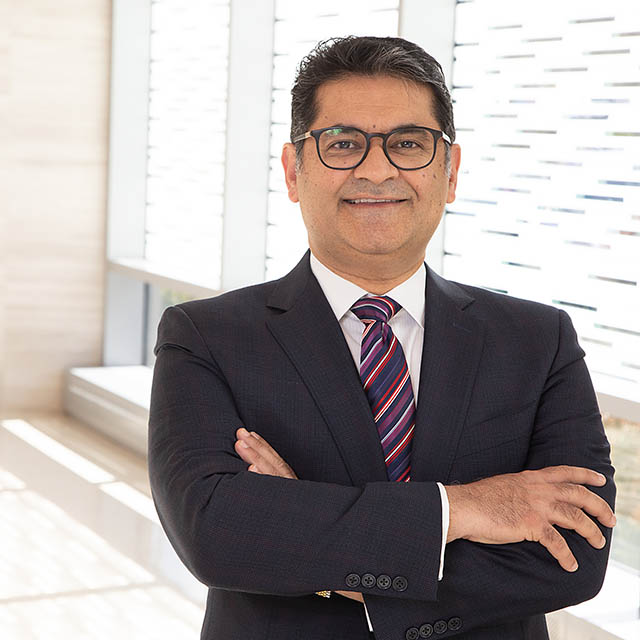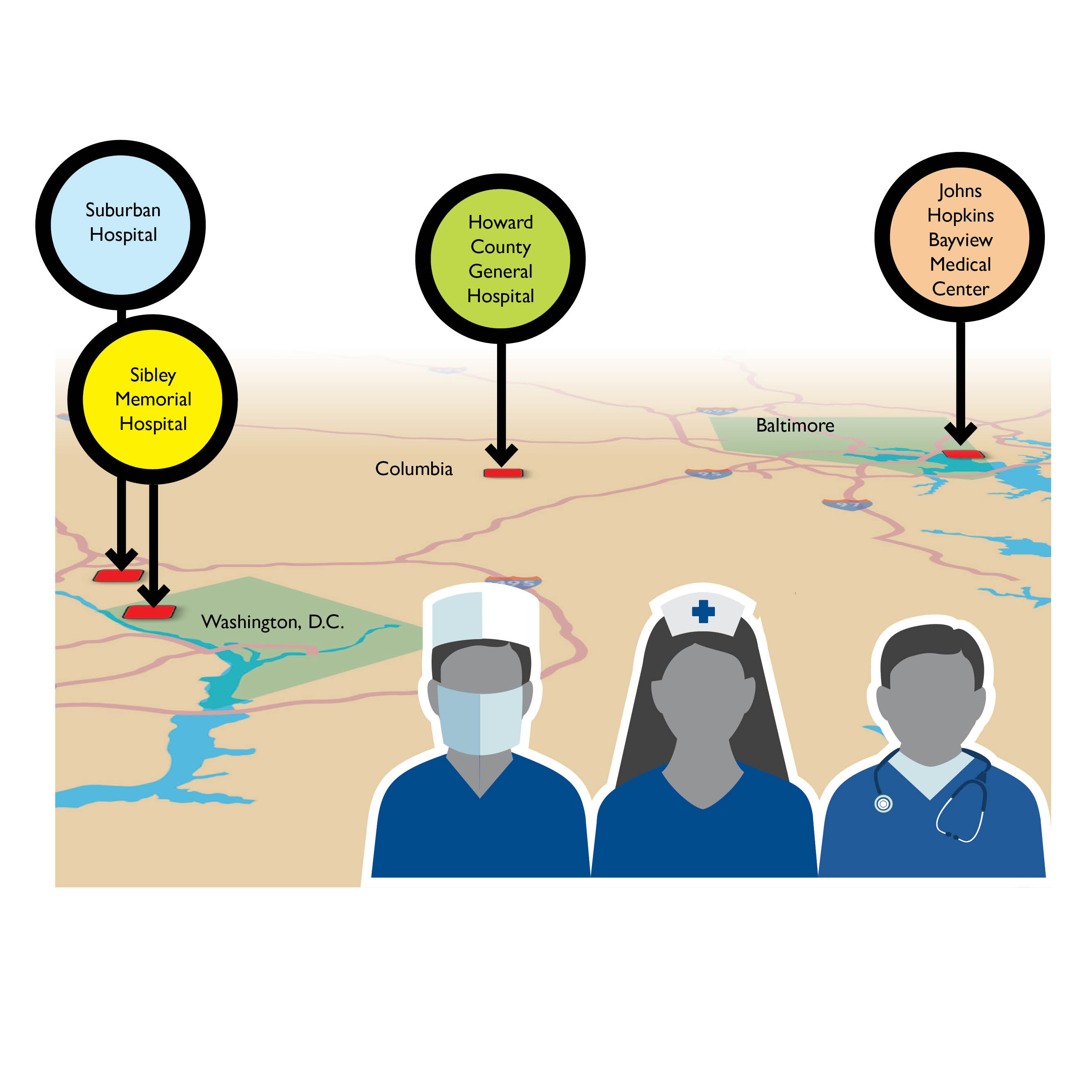Gabriel Ivey, M.D.’s father, grandfather and even his great-grandfather were all surgeons, so perhaps it’s not surprising that he followed the family tradition and became a surgeon too.
“Their passion for caring for patients rubbed off on me,” says Ivey.
A fellowship-trained surgical oncologist who specializes in hepatobiliary and pancreatic cancers, gastric cancer, melanoma and sarcoma, Ivey joined Johns Hopkins in October as the first surgical oncologist based at the Johns Hopkins Kimmel Cancer Center in the National Capital Region. He treats patients at Sibley Memorial Hospital and Suburban Hospital.
Ivey’s presence in the National Capital Region means patients can receive Johns Hopkins surgical oncology care close to home. “Patients are plugged into the Hopkins system and receive comprehensive, world class care, including access to clinical trials,” he says.
Minimally Invasive
Ivey provides minimally invasive surgeries for patients with liver, pancreas, gallbladder, bile duct and gastric cancers. He also treats patients with melanomas, other skin cancers and soft tissue sarcomas.
The goal of these surgeries, he says, is to remove the cancer while saving as much of the healthy organ as possible. “The pancreas, for instance, is an organ that sits behind the stomach and is responsible for producing enzymes and hormones that aid digestion and control blood sugar,” he says. “Given its function, we try to take just what’s needed to remove the cancer. We approach other organs, like the liver and stomach, similarly.”
Patients who receive minimally invasive surgery generally require very small incisions, which means they typically experience less pain and are able to heal faster than after a more invasive surgical option. That also means patients can recover sooner, and can start other treatment modalities like chemotherapy faster.
Liver, pancreas and gallbladder cancers are relatively rare. Unless there is a family history or genetic syndrome that increases risk, people are typically not screened for these malignancies. “Unless they are caught incidentally on imaging obtained for another reason, these cancers have the potential to be very advanced by the time they are discovered,” Ivey says.
Ivey works with a multi-disciplinary team of oncologists, radiologists and other Johns Hopkins specialists to determine the most effective treatment for each patient.
For example, he says a patient may not seem like an obvious candidate for surgery because the cancer is very large, but chemotherapy provided by a medical oncologist can shrink or stabilize the size of the tumor to make surgery possible. Even when patients cannot be cured, “these treatments — when performed as part of a larger multi-disciplinary treatment plan — can extend their life, improve their quality of life and provide hope,” Ivey says.
Ivey, who lives in Washington, D.C., with his wife and two young sons, grew up near San Francisco. He learned teamwork playing soccer and football, and likes putting those skills to use at the Kimmel Cancer Center.
He decided to pursue a career in medicine when he was an undergraduate at Princeton University. At the Howard University College of Medicine, he became interested in surgery, and during his residency at Georgetown University, he refined his focus to surgical oncology.
“I like the immediacy of impact and working as a team,” Ivey says. “I am passionate about cancer care and feel extraordinarily honored and privileged to be able to help people during a difficult time in their life.”


